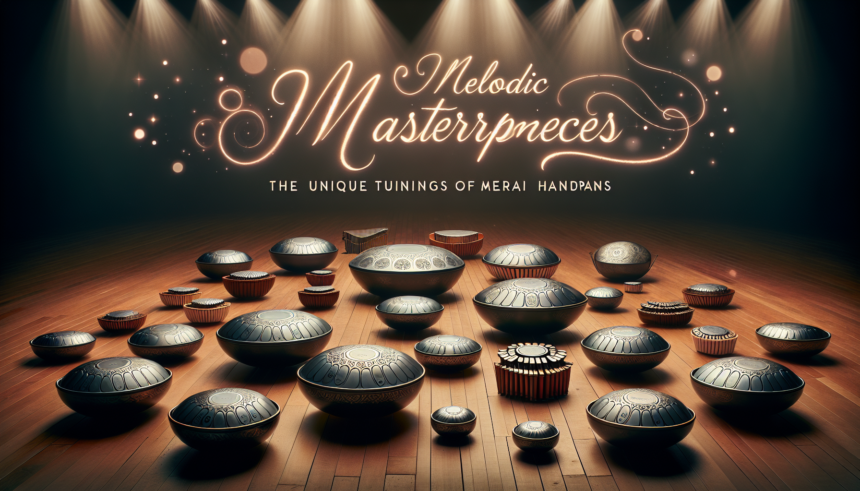The handpan is a mesmerizing instrument, known for its ethereal sounds and captivating vibrations. Among the variety of handpan makers, Meraki Handpans stand out with their unique tunings, meticulous craftsmanship, and attention to detail. These elements make Meraki Handpans a favorite among musicians and enthusiasts alike. This article dives into the artistry behind Meraki Handpans, exploring what sets their tunings apart and how they contribute to creating truly melodic masterpieces.
The Birth of Meraki Handpans
Meraki Handpans was founded by a team of passionate musicians and craftsmen. They brought together their expertise and love for the instrument to create handpans that not only sounded exceptional but also had a soul. The name “Meraki” itself signifies doing something with soul, creativity, or love, which perfectly encapsulates their approach to making handpans.
The foundation of Meraki Handpans lies in their dedication to combining traditional craftsmanship with modern innovation. Every instrument is carefully handcrafted, ensuring each note, or tone field, is perfect. This dedication to quality has placed Meraki Handpans at the forefront of the handpan community.
Unique Tunings: Crafting the Perfect Soundscape
One of the most distinguishing features of Meraki Handpans is their unique tunings. Unlike conventional musical instruments, handpans are tuned differently and provide a broader spectrum of soundscapes. The process of tuning a handpan is intricate and requires an ear for harmony and precision.
Meraki Handpans offer a variety of scales, each bringing its own mood and character to the music. Some of their popular scales include:
- D Kurd: Known for its versatility, the D Kurd scale offers a mix of melancholy and happiness, making it suitable for various musical styles.
- Celtic Minor: This scale has a mystical and haunting quality, often used for meditative and reflective music.
- Ake Bono: Originating from Japan, the Ake Bono scale provides an exotic and uplifting sound, perfect for creating serene and tranquil melodies.
- Ijaz: Inspired by Middle Eastern music, the Ijaz scale is exotic and enchanting, adding a touch of mystery to the compositions.
Each of these scales undergoes a meticulous tuning process. The craftsmen at Meraki Handpans strike and shape the metal with precision to create the desired tone for each note. This intricate tuning ensures that every handpan produces a harmonious and resonant sound, embodying the spirit of the scale it represents.
Handpans as Melodic Masterpieces
Meraki Handpans are not just musical instruments; they are melodic masterpieces. The combination of unique tunings and superior craftsmanship results in handpans that are capable of expressing a wide range of emotions. Each handpan tells a story through its music, offering listeners an immersive and transformative experience.
Musicians around the world appreciate Meraki Handpans for their responsive touch and nuanced sound. Playing a Meraki Handpan is a tactile and auditory delight, as the instrument responds to the lightest of touches and produces a rich, layered sound. Whether played solo or as part of an ensemble, Meraki Handpans create a mesmerizing auditory landscape.
Furthermore, Meraki Handpans are crafted to be durable and long-lasting. The materials used are of the highest quality, ensuring that each handpan maintains its sound and resonance over time. This commitment to quality allows musicians to explore and create music with confidence, knowing that their instrument will perform consistently.
The Influence of Culture and Tradition
The unique tunings of Meraki Handpans are influenced by a rich tapestry of cultural and musical traditions from around the world. Each scale reflects the essence of its cultural roots while allowing for creative expression and modern interpretation.
For instance, the Celtic Minor scale draws inspiration from the ancient music of the Celts, with its melancholic and reflective tones. On the other hand, the Ake Bono scale brings the serene and tranquil sounds of traditional Japanese music to life. This blend of global influences allows Meraki Handpans to resonate with a diverse audience, transcending geographical and cultural boundaries.
The Craftsmanship Behind the Sound
The creation of Meraki Handpans involves a meticulous process that combines traditional techniques with modern innovation. The craftsmen begin with high-quality steel sheets, which are carefully shaped into the familiar dome structure of the handpan.
The next step is to create the tone fields, which are the individual notes on the handpan. This involves precision hammering and tuning to ensure that each note resonates perfectly. The craftsmen use their trained ears and advanced tuning equipment to achieve the desired sound for each tone field.
After the initial shaping and tuning, the handpans undergo a process of heat treatment and nitriding. This process not only enhances the durability of the handpan but also contributes to its unique sound characteristics. The final step is a meticulous finishing process, where the handpans are polished and coated to protect them from the elements.
This combination of craftsmanship and innovation results in handpans that are not only beautiful to look at but also produce an unparalleled sound quality. Every Meraki Handpan is a testament to the dedication and skill of the craftsmen who create them.
Conclusion
Meraki Handpans represent the pinnacle of artistry and craftsmanship in the world of handpan music. Their unique tunings, superior craftsmanship, and dedication to quality make them a favorite among musicians and enthusiasts alike. Each Meraki Handpan is a melodic masterpiece, capable of transporting listeners to new realms of musical expression and emotional depth.
Whether you’re a seasoned musician or a newcomer to the world of handpans, Meraki Handpans offer a captivating and transformative experience. Their unique tunings and unparalleled sound quality make them a perfect choice for anyone looking to explore the enchanting world of handpan music.
FAQs
1. What makes Meraki Handpans unique?
Meraki Handpans are unique due to their meticulous craftsmanship, high-quality materials, and unique tunings. Each handpan is carefully handcrafted to produce a rich, resonant sound that is both captivating and transformative.
2. How are Meraki Handpans tuned?
Meraki Handpans are tuned through a meticulous process that involves precision hammering and tuning to create the desired tone for each note. The craftsmen use their trained ears as well as advanced tuning equipment to achieve the perfect sound for each tone field.
3. What scales are available for Meraki Handpans?
Meraki Handpans offer a variety of scales, including D Kurd, Celtic Minor, Ake Bono, and Ijaz, among others. Each scale offers a unique sound and mood, allowing musicians to explore a wide range of musical expressions.
4. How are Meraki Handpans made?
The creation of Meraki Handpans involves shaping high-quality steel sheets into a dome structure, creating the tone fields through precision hammering and tuning, and undergoing a process of heat treatment and nitriding. The final steps include polishing and coating to protect the handpan from the elements.
5. Are Meraki Handpans durable?
Yes, Meraki Handpans are crafted to be durable and long-lasting. The materials used are of the highest quality, and the process of heat treatment and nitriding enhances the durability and sound quality of the handpans.





